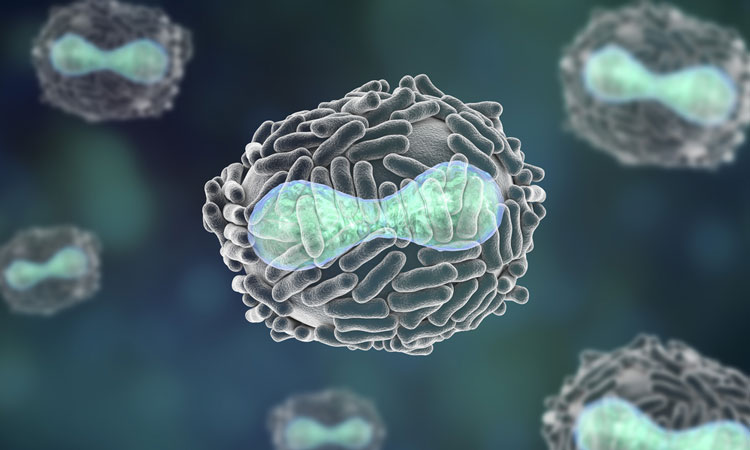Vaccinia virus hijacks cellular movements to spread
Posted: 13 November 2018 | Iqra Farooq (Drug Target Review) | No comments yet
To spread throughout the body, the vaccinia virus mimics the infected cells’ own proteins enabling the cell to move around and spread…


The poxvirus, vaccinia virus, can make cells activate their own movement mechanism in order to rapidly spread through the body.
Researchers have identified how the virus spreads in mouse models and in cell cultures, and have explained how the virus mimics the infected cells’ own proteins to activate the signalling pathway that enables the cell to move around.
This is video shows virus-infected cells crawling away from the epicentre of infection over time. Credit: Corina Beerli, UCL.
Lead author of the study Dr Jason Mercer, at the MRC Laboratory for Molecular Cell Biology at UCL said: “We were surprised to find that not only does the poxvirus turn on the infected cell’s motility pathway, it also controls the speed and direction of movement to coordinate the rapid spread of the infected cells.”
The vaccinia virus is a large, complex virus that has a linear, double stranded DNA genome and is related to both smallpox and monkeypox. It produces vaccinia growth factor that mimics epidermal growth factor – the protein that encourages the growth of healthy cells.
“There are numerous viruses, including herpes viruses and tumour-causing viruses, that are known to promote movement in infected cells, so by clarifying the mechanism in one virus, we hope to shed light on new therapeutic targets to prevent the spread of many different viruses,” said Corina Beerli, a PhD student in the MRC Laboratory for Molecular Cell Biology at UCL.
The team found that when they removed the VGF protein from vaccinia virus-infected cells, the virus was not able to enhance cell motility. They found that VGF was effectively activating the host cell’s epidermal growth factor receptors, in order to initiate cell movement.
The research team identified how the virus used the signalling pathway to spread away from the site of infection in order to spread it around the body. The team also tested their results in mouse models, and found that that the virus spread more effectively and developed larger lesions when infected with the unmodified version of the virus than when infected with the VGF-deficient version of the virus.
“By making this connection between how a poxvirus and metastatic cancer spread, we’ve opened up new possibilities for antiviral strategies. There is a wide range of cancer drugs that already target this signalling pathway to stop the spread of metastatic cancer cells, so we hope that further research will uncover whether those cancer drugs could be re-purposed as antiviral agents or combined with existing antivirals,” said Dr Mercer.
The study was published in the journal Nature Microbiology.
Related topics
Disease Research, Drug Discovery, Drug Targets, Research & Development, Therapeutics
Related conditions
monkeypox, Smallpox, vaccinia virus
Related organisations
MRC Laboratory for Molecular Cell Biology at UCL
Related people
Corina Beerli, Dr Jason Mercer








